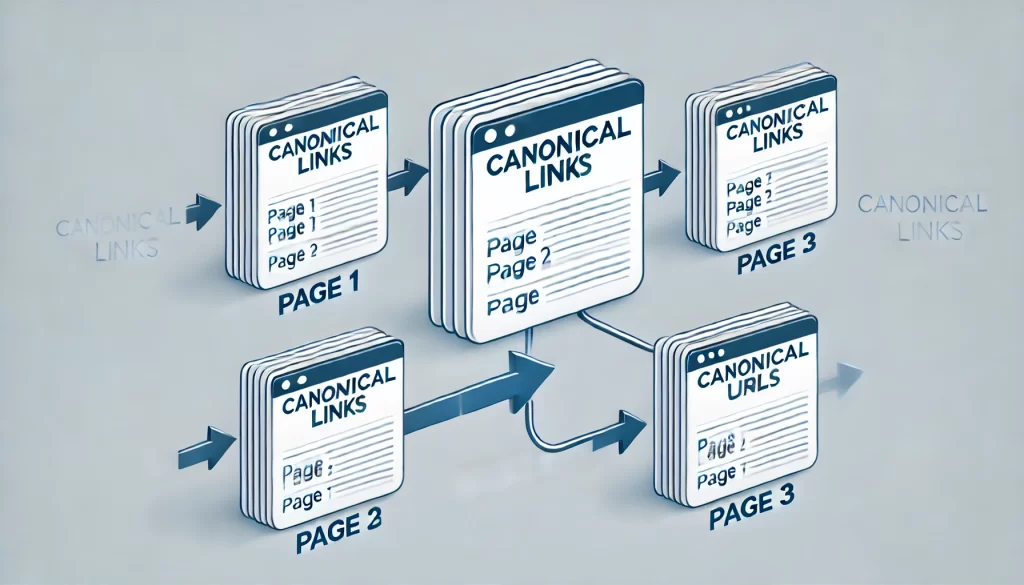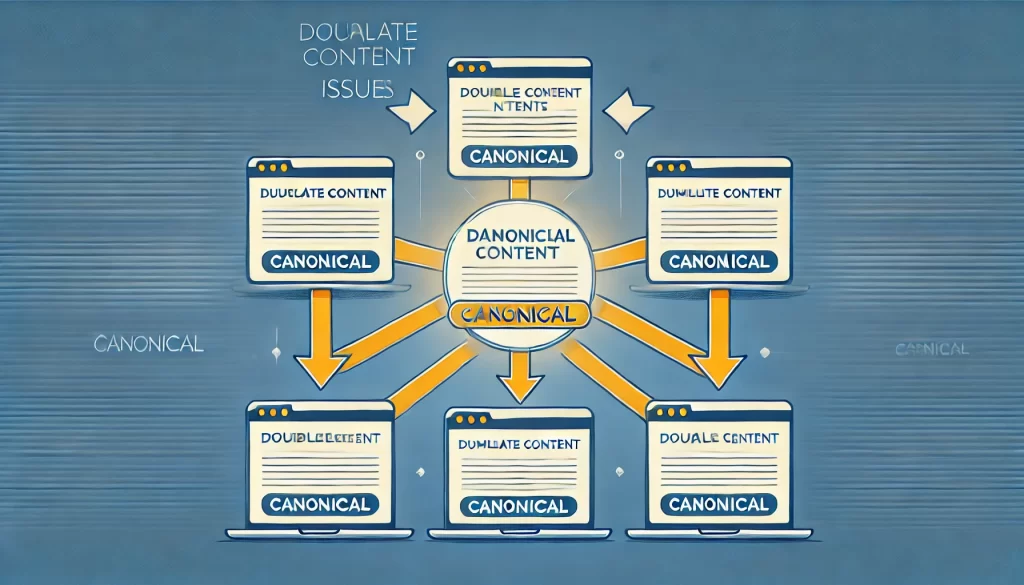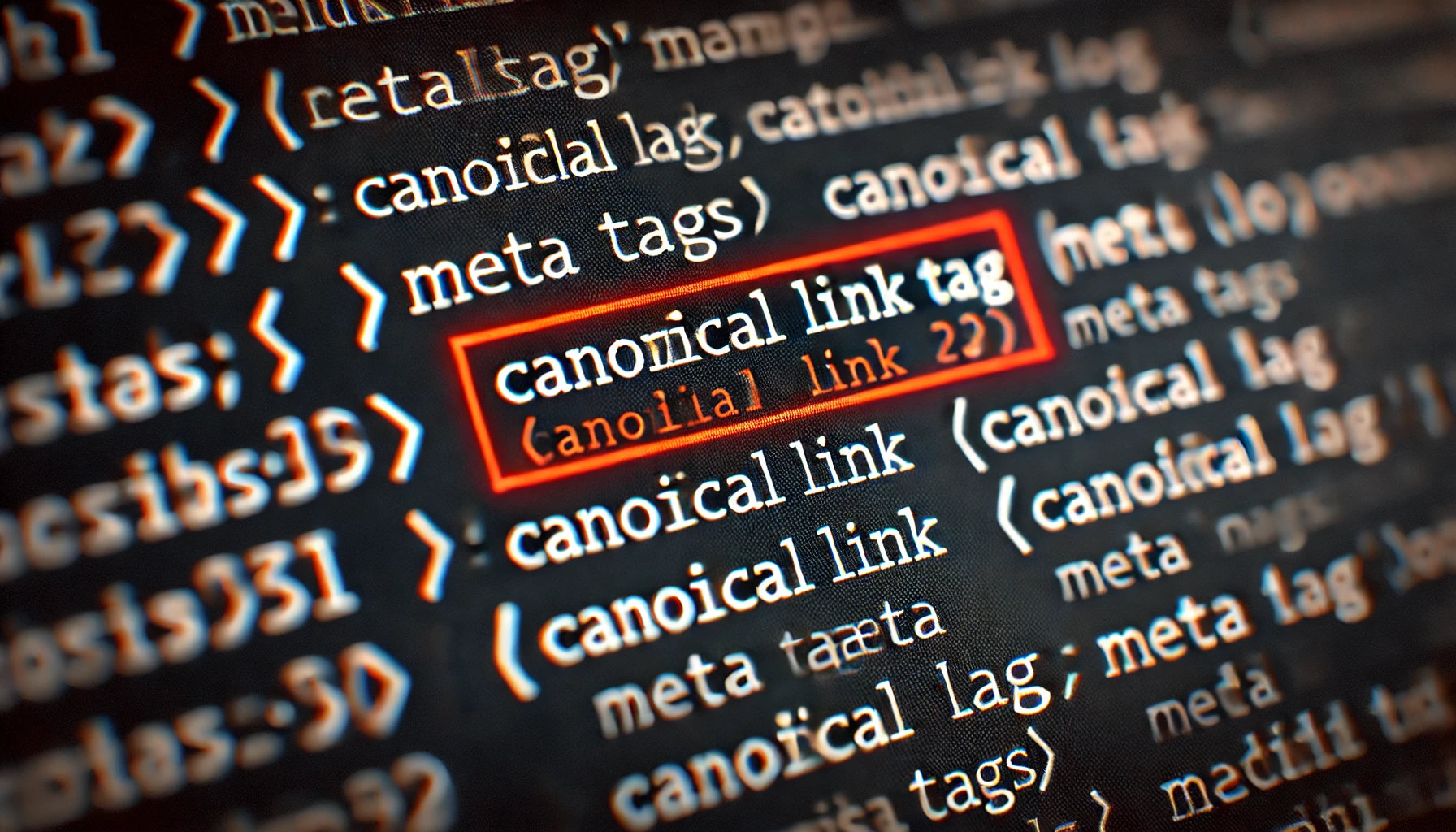Introduction
In the world of SEO, duplicate content is a challenge that many website owners face. When the same or similar content appears across multiple URLs, it can confuse search engines, negatively affecting your rankings. But don’t worry – the solution is simple: Canonical Links.
A Canonical Link helps you resolve duplicate content issues by telling search engines which version of a page is the “preferred” one. This blog will walk you through how to use Canonical Links effectively to avoid penalties, consolidate ranking signals, and enhance your SEO strategy.

What is a Canonical Link?
Defining a Canonical Link
A Canonical Link is a tool used in SEO to specify the “main” or “preferred” version of a page when multiple versions of similar or identical content exist. It’s implemented using the <link rel=”canonical”> tag in the HTML header of a page, pointing to the URL you want search engines to prioritize.
The Connection Between Canonical Link and Canonical URL
The Canonical URL is the actual URL that you’re designating as the preferred version. When you implement a Canonical Link, you are essentially telling search engines to treat the target URL as the primary source, even if other pages have similar content.
Why Duplicate Content is Harmful for SEO
Overview of Duplicate Content Issues
When a website has duplicate content, search engines may struggle to determine which page should rank. This confusion can lead to multiple pages competing for the same keyword, diluting the effectiveness of your SEO efforts.
Duplicate content can split the link equity (the value passed through backlinks) between multiple pages, reducing the authority of any single page. This means that even if several pages are technically relevant, none of them may rank as highly as the primary version should.
Suggested Post:
How Search Engines Penalize Websites with Duplicate Content
Search engines, especially Google, don’t penalize websites for having duplicate content outright. However, if multiple versions of the same content appear, the search engine may choose to index only one of them. This can lead to lower rankings for pages that aren’t selected as the canonical version. In some cases, search engines may even de-index pages or show a lower-quality version in search results, leading to poor visibility and lost traffic.

The Role of Canonical Links in SEO
Why Canonical Links Are Crucial for Resolving Duplicate Content Problems
Canonical Links provide an easy solution for consolidating duplicate content under one URL. By explicitly stating which URL should be treated as the main one, you ensure that search engines attribute all the ranking signals (like backlinks) to the correct page.
How Canonical Links Consolidate Ranking Signals
When you have similar content across different pages, Canonical Links help consolidate the ranking signals from all those pages to the primary one. This means that any backlinks or social signals pointing to the duplicate pages are all passed to the canonical page, boosting its authority and improving its ranking in search results.
How to Use Canonical Links on Your Website
Step-by-Step Guide on Implementing Canonical Links
- Identify Duplicate Pages: Start by identifying pages on your website that have similar or identical content.
- Add the Canonical Tag: In the <head> section of the HTML code for these pages, add the <link rel=”canonical”> tag, specifying the URL of the page you want search engines to treat as the main version.
Example of a Canonical Link in HTML:
html
CopyEdit
<head>
<link rel=”canonical” href=”https://www.example.com/primary-page-url/” />
</head>
Case Study – Blog Post with Multiple Versions
Let’s say you’ve published a blog post that has multiple versions—one in the English language and one in Spanish. If both pages have the same content (except for language), you can use the Canonical Link to indicate that the English version is the preferred version for search engines. This way, both pages benefit from the same SEO value without competing against each other.
Where to Place Canonical Links
Deciding Which Page Should Be Your Canonical Version
When deciding which page should be the canonical version, choose the one that provides the most value and relevance for users. For example, if you have multiple product pages for the same item in different colors or sizes, choose the main product page (often the one with the most content or backlinks) as the canonical version.
Implementing Canonical Links Across Different Content Types
- Blog Posts: If you have blog posts with similar content on different pages (such as updated versions), add the canonical tag to the latest version.
- Product Pages: For eCommerce websites, when you have multiple versions of a product (e.g., size or color variants), use canonical links to point to the main product page.
- Paginated Content: Canonical Links should be used to indicate the main page when dealing with paginated content (e.g., blog series, or product listings that span multiple pages).
Common Mistakes with Canonical Links
Forgetting to Add Canonical Links to Certain Pages
A common mistake is forgetting to add canonical links to pages that may be considered duplicates. Ensure that every page with similar content has the appropriate canonical tag pointing to the correct URL.
Pointing to Irrelevant URLs
Make sure the URL specified in the canonical tag is relevant and correctly represents the main content. Pointing to a less authoritative or unrelated page can confuse search engines and potentially harm your rankings.
Not Using Canonical Links for Paginated Content
Many websites overlook paginated content when implementing canonical links. Without this, search engines may index each paginated page separately, which can cause ranking issues. Always ensure that your paginated pages have the correct canonical tag pointing to the main content.
Best Practices for Canonical Links
- Use Canonical Links for Similar Content: If your content appears in multiple versions (e.g., language translations, product variants), always use canonical links to designate the preferred page.
- Test Canonical Links: Use tools like Google Search Console to ensure your canonical links are implemented correctly. The “Coverage” section in Search Console can help you spot issues with duplicate content.
- Ensure Correct Canonical URL Format: The canonical URL must be an absolute URL, not a relative one. Ensure the link is accurate and points to the preferred version of your content.
- Regular Audits: Periodically audit your website for canonical link issues. A thorough audit will help you catch any missed tags and ensure that your SEO strategy remains on track.
Key Takeaways:
Canonical links are an essential tool in the SEO toolkit for handling duplicate content issues. By directing search engines to the correct version of your pages, you avoid penalties, consolidate ranking signals, and improve your website’s search visibility. Make sure to implement canonical links properly to enhance your SEO strategy and achieve long-term success in search engine rankings.
Canonical links help websites manage duplicate content effectively, ensuring search engines prioritize the correct pages for indexing and ranking. Implementing them correctly is crucial for avoiding penalties and enhancing overall SEO performance.
- Canonical links are vital for managing duplicate content and consolidating ranking signals.
- Proper canonical link implementation prevents search engines from penalizing your site.
- Regular audits and testing using Google Search Console ensure your canonical links are working as expected.
FAQs
How does Google treat Canonical Links compared to 301 redirects?
Google treats Canonical Links similarly to 301 redirects in that both tell search engines which page is the “main” version. However, 301 redirects immediately send users to the canonical URL, while canonical links only guide search engines, leaving the user on the original page.
Can I use Canonical Links on non-duplicate content?
Using canonical links on non-duplicate content is unnecessary. Canonical tags are specifically designed for managing duplicate content. For unique pages, there’s no need for canonicalization.
Should I use Canonical Links for media content like images?
Yes, you can use canonical links for media content such as images or videos, especially if similar content appears across multiple URLs. For example, multiple pages featuring the same image should point to a primary image page using the canonical link.
